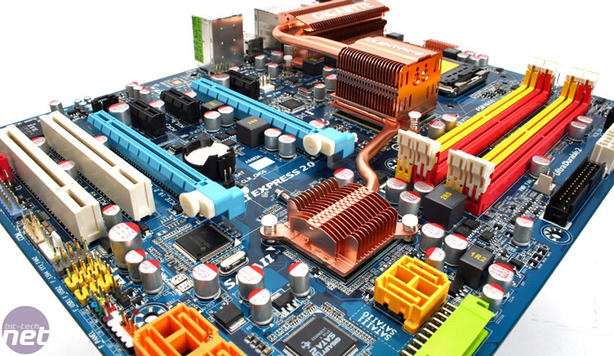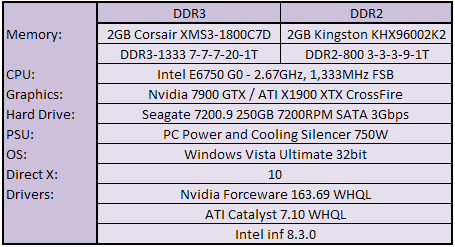Gigabyte X38-DS5 review & X38T-DQ6 revisit
November 6, 2007 | 13:43

Testing Methods:
With the exception of SiSoft Sandra, all of our benchmarks have been engineered to give you numbers that you are likely to find useful when actually using the products we have evaluated in the real world.We are also focusing a lot more of our time on evaluating the stability of the motherboards (and platforms) using a stress test designed to highlight any of the potential weaknesses that the product may have. That involves a gradually increasing amount of stress starting with Prime95 torture test on all cores and expanding to a looping 3DMark06. This is to ensure that all parts of the system are stressed simultaneously over a period of time.
We believe that the consumer is never likely to subject their platform to this level of stress and we are not expecting every product to complete an entire extended stress test. However, most poorly engineered products fail within the first couple of hours, or even minutes, allowing us to make a conscious decision on whether a motherboard (or platform) is worth your money, regardless of how well it performs in our benchmarks.

Test Setup:

Systems:
- Gigabyte GA-X38T-DQ6 - F4a
- Gigabyte GA-X38-DS5 - F3e
- Abit IP35 Pro - BIOS B14
- Asus Maximus Formula - BIOS 0505
We've tried to cover a top to bottom pricing and as such we have included a performance-orientated, but less expensive P35 board: the Abit IP35 Pro which earned bit-tech's recommended award. Additionally, we have included the Asus Maximus Formula which we've yet to fully review (we will, don't worry - consider this a sneak-preview). The Maximus Formula is also a DDR2-based motherboard, but is more expensive than the other boards on test here. How these two boards fit into the picture against both the DDR3-based GA-X38T-DQ6 and middle-ground GA-X38-DS5 should be interesting to see.
Unfortunately our USB/Firewire drive died during testing so we were unable to get USB and Firewire performance numbers.

MSI MPG Velox 100R Chassis Review
October 14 2021 | 15:04








Want to comment? Please log in.